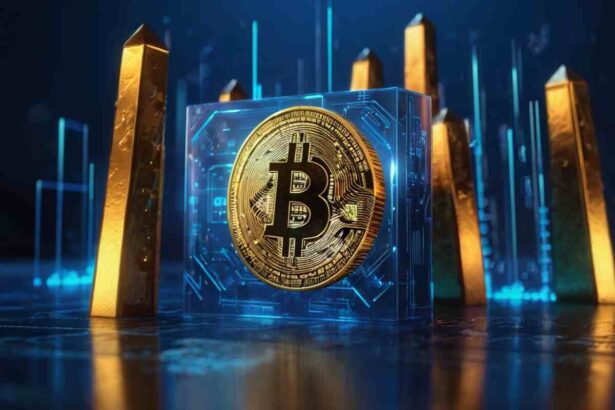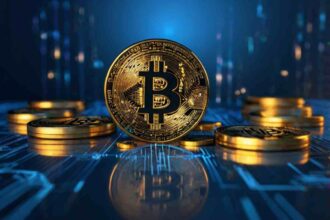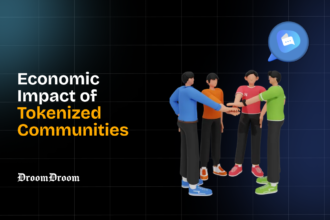Suppose you’re on the path to discovering the secrets of currencies. Of course, your itinerary will start with something like the so-called “block reward” concept.
Block reward is a type of compensation given to Bitcoin miners when they validate and add new deals in a transaction process called mining. By way of example, a block reward refers to several freshly created coins and transaction rates associated with the transactions contained within a newly mined block in the context of Bitcoin and many other proof-of-work cryptocurrencies.
As the block reward decreases with time, more weight is attached to the transaction fee as part of the incentive structure for the sustained and independent economy of the cryptocurrency network. Block rewards serve as a key foundation for securing proof of work in blockchain networks.
What are Block Rewards Used For?
Miners strive for block rewards, just like the eagerness of students hoping to earn gold stars in the crypto world. These rewards serve a dual purpose: Firstly, they serve as motivations for the miners to apply their computational capabilities to validate transactions while retaining the authenticity of the blockchain. In essence, miners receive rewards because of the process of securing and verifying digital transactions.
Lastly, block rewards are important as they serve the purpose of injecting fresh coins into the economy. Many blockchain networks issue a predetermined number of crypto coins for every block they create. Controlled inflation pays miners while stably introducing the currency into the market, avoiding big volumes that can impact the market.
In summary, block rewards are the incentive sweets that keep the blockchain machine rolling, thus ensuring the decentralized wonders of cryptocurrencies keep on going.
Block Rewards and Transaction Fees
Block rewards and transaction fees are two dynamite duos in the world of cryptocurrency incentives! Although the main carrot offered to miners is block rewards, transaction fees lend it an extra pungent flavor.
In addition to new money creation as well as a block reward, miners also share transaction fees paid by customers who want their transactions to fit into blocks. Paying for this small transaction toll is just like their willingness to speed up their dealings.
As the period moves and block rewards are reduced, the need for transaction fees increases significantly. Firstly, these fees help miners earn more while still maintaining economic equilibrium, which keeps the network healthy.
Therefore, in the grand symphony of a blockchain, block rewards, and transaction fees dance together to ensure that miners stay active while the wheel of decentralization keeps turning evenly.
How are Block Rewards Created?
A modern-day blacksmith is minting fresh Bitcoin from the inferno of blockchain technology. Haha, not exactly; it’s true, though. Wow, brilliant idea! Mining is a way through which block rewards are produced.
The successive solution to a difficult mathematical problem, or “proof-of-work” algorithm, allows a miner to append or add another block of transactions to the chain. The winning miner is awarded a predetermined number of new cryptocurrency coins for his or her computational dexterity and benefit to the network. It is through this procedure that the block reward is produced.
However, the particular dynamics are unique among several cryptocurrencies. For instance, concerning Bitcoin, its production cuts by half every four years as it happens during the halving moment. As such, this planned reduction creates a limited number of Bitcoin which may lead to an increased value for this currency.
Essentially, these block monetary incentives provide a reason for the continuous operation of this virtual world with the use of cryptographic wonders called mining.
Why Is Block Reward Important?
Block rewards can be considered the pulse of a cryptocurrency. It’s essential for several reasons:
Incentive for Miners
The miners are uncelebrated heroes who put their computation power and resources into verifying transactions and ensuring the security of the whole network. In short, the ‘juicy’ carrot is the block reward that motivates the miners to proceed with their search for blocks.
New Coin Circulation
New coins are released into circulation through block rewards. This controlled issuance assists in regulating the supply of this cryptocurrency, thereby avoiding a large injection into the market, which would be detrimental to market stability. For example, in the case of Bitcoin, the halving events decrease the amount of newly minted bitcoins over time, making them scarce and thereby affecting their worth.
Network Security
Mining (block rewards) makes blockchain more secure, as this process occurs in stages. Solving these puzzles is difficult, and miners must race each other to be the first to solve them. This makes it impossible to tamper with previous transactions. The more powerful the computational power for securing the network, the more resilient it is to attack.
Transaction Validation
High-fee payments offer miners an extra reward that makes them give priority to certain transactions. This facilitates the efficient processing of transactions, thus fostering a robust fee market environment. As time goes on, with a declining block reward, mining becomes more dependent on miner fees, which ensure its economic sustenance.
The very heart of the peer-to-peer distributed architecture of crypto coins is embodied in the concept of the so-called block reward, which is instrumental in guaranteeing the ongoing involvement and maintenance of the network as well as its economy and safety outlook. They are no mere digital complement, for they are the heartbeat of the crypto-verse.
Advantages of Block Reward
The block reward is like the MVP (Most Valuable Player) in the cryptocurrency game, and here are some of its standout advantages:
Incentive Structure
The block reward is a powerful motivator that keeps miners involved in making the blockchain secure. Miners provide new coins, which encourages them to share their computing power, which ensures the reliability and security of the network.
Network Security
Miners solve difficult cryptographic puzzles to earn block rewards. These calculations are not a superfluous formality but do add to the overall security of the network. More miners are involved, and the blockchain is tougher in terms of attacks because it creates a strong bulwark against attackers.
Gradual Coin Distribution
The newly introduced money is controlled with the help of the block reward. A gradual distribution in this case helps curb sudden surges in the circulation of the cryptocurrency, which tends to have a significant impact on the economy. Moreover, concerning the halving of Bitcoin, it may as well fuel the narrative around its scarcity and value.
Transaction Processing
As such, miners prioritize transactions that have higher fees, thereby encouraging competition in the free market. This also makes it possible for market-driven payment schemes to be created to reward miners for processing transactions quickly. With the reduction of the block reward, over time, transaction fees will serve as an important source of sustenance for the financial viability of mining in general terms.
Lastly, the block reward is not only a digital bonus but a multi-functional one that motivates, encourages, and upholds the magic of decentralization in the crypto world. This is an engine that ensures the wheel of blockchain turns around, as well as an ecosystem that ensures the life of cryptocurrency remains alive.
Disadvantages of Block Reward
However, this block reward proves to be one significant weakness of many cryptocurrency systems. Here are a couple of challenges associated with the block reward:
Inflationary Pressures
The provision of new coins as block rewards also increases the overall supply. This can in some cases give rise to inflationary pressure, in particular where the speed of issuing coins has been considerable.” Although many cryptocurrencies consider things such as halving events for dealing with inflation, controlling this aspect remains an important issue to be kept in mind.
Dependency on External Factors
The current market price generally determines the magnitude of a block reward’s value. Mining operations are sensitive to fluctuations in the market that could influence their profitability. In cases where there is a bear market or if the prices of the cryptocurrencies fluctuate heavily, miners may not get as lucrative rewards.
Energy Consumption Concerns
Blockchains also usually rely on a proof-of-work consensus mechanism that is extremely resource-hungry. This has raised several controversies about possible environmental degradation associated with mining, especially because of the huge consumption of energy. Others point out that the block reward acts as compensation for miners, and this indirectly has environmental consequences for the crypto coins.
Long-Term Sustainability
Thus, as the blocks are mined with less and less reward until halvings occur, more transaction charges come into play, sustaining the miners. The network’s long-term sustainability makes it important to have a sound and competitive cost market. Mining may not be economical if transaction fees are inadequate.
These drawbacks suggest that continued creativity in cryptography is imperative to resolve matters of sustainability, economic viability, and expandability concerning preserving essential principles like autonomy and safety.
Conclusion
In such a manner, we have managed to peel the intriguing onion that blocks rewards. In today’s digital space, such bonuses become much more crucial since it is not only the reward in terms of figures but also the substance that keeps alive the decentralized pulse of cryptos. Block rewards motivate miners, protect network security, and shape economies in many ways.
The idea of block rewards informs us that there is a reward for innovation in the crypto world. This is a cryptographic, economic, and decentralized adventure beyond mere coins. Thus, if you are a miner who is looking for unreachable awards or an adventurer going through the blockchain, block rewards form an item that can open doors to understanding the mysteries of this intriguing crypto world. Continue searching; may you prosper.




















